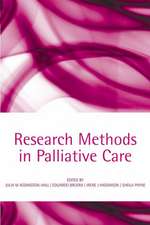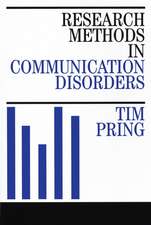Regulated Proteolysis in Microorganisms: Subcellular Biochemistry, cartea 66
Editat de David A. Douganen Limba Engleză Paperback – 16 apr 2015
| Toate formatele și edițiile | Preț | Express |
|---|---|---|
| Paperback (1) | 1096.98 lei 6-8 săpt. | |
| SPRINGER NETHERLANDS – 16 apr 2015 | 1096.98 lei 6-8 săpt. | |
| Hardback (1) | 1110.32 lei 6-8 săpt. | |
| SPRINGER NETHERLANDS – 29 mar 2013 | 1110.32 lei 6-8 săpt. |
Din seria Subcellular Biochemistry
- 18%
 Preț: 948.79 lei
Preț: 948.79 lei - 5%
 Preț: 1456.88 lei
Preț: 1456.88 lei - 18%
 Preț: 1373.84 lei
Preț: 1373.84 lei - 18%
 Preț: 1243.78 lei
Preț: 1243.78 lei - 18%
 Preț: 2098.81 lei
Preț: 2098.81 lei - 18%
 Preț: 1122.10 lei
Preț: 1122.10 lei - 5%
 Preț: 1160.63 lei
Preț: 1160.63 lei - 18%
 Preț: 1396.26 lei
Preț: 1396.26 lei - 18%
 Preț: 1114.96 lei
Preț: 1114.96 lei - 18%
 Preț: 1224.68 lei
Preț: 1224.68 lei - 18%
 Preț: 951.29 lei
Preț: 951.29 lei - 18%
 Preț: 1227.99 lei
Preț: 1227.99 lei -
 Preț: 398.15 lei
Preț: 398.15 lei -
 Preț: 399.88 lei
Preț: 399.88 lei - 18%
 Preț: 1231.47 lei
Preț: 1231.47 lei - 18%
 Preț: 1230.35 lei
Preț: 1230.35 lei -
 Preț: 392.60 lei
Preț: 392.60 lei - 18%
 Preț: 1231.47 lei
Preț: 1231.47 lei - 15%
 Preț: 638.76 lei
Preț: 638.76 lei - 5%
 Preț: 656.26 lei
Preț: 656.26 lei -
 Preț: 389.49 lei
Preț: 389.49 lei - 5%
 Preț: 659.19 lei
Preț: 659.19 lei -
 Preț: 392.37 lei
Preț: 392.37 lei - 5%
 Preț: 662.09 lei
Preț: 662.09 lei -
 Preț: 395.09 lei
Preț: 395.09 lei - 5%
 Preț: 667.99 lei
Preț: 667.99 lei -
 Preț: 400.47 lei
Preț: 400.47 lei - 18%
 Preț: 1224.54 lei
Preț: 1224.54 lei - 15%
 Preț: 647.73 lei
Preț: 647.73 lei - 15%
 Preț: 646.75 lei
Preț: 646.75 lei - 5%
 Preț: 662.30 lei
Preț: 662.30 lei -
 Preț: 395.25 lei
Preț: 395.25 lei - 18%
 Preț: 1230.21 lei
Preț: 1230.21 lei - 18%
 Preț: 1231.95 lei
Preț: 1231.95 lei - 18%
 Preț: 964.54 lei
Preț: 964.54 lei
Preț: 1096.98 lei
Preț vechi: 1154.72 lei
-5% Nou
Puncte Express: 1645
Preț estimativ în valută:
209.90€ • 219.16$ • 173.72£
209.90€ • 219.16$ • 173.72£
Carte tipărită la comandă
Livrare economică 04-18 aprilie
Preluare comenzi: 021 569.72.76
Specificații
ISBN-13: 9789401783668
ISBN-10: 9401783667
Pagini: 348
Ilustrații: XIV, 333 p.
Dimensiuni: 155 x 235 x 18 mm
Greutate: 0.49 kg
Ediția:2013
Editura: SPRINGER NETHERLANDS
Colecția Springer
Seria Subcellular Biochemistry
Locul publicării:Dordrecht, Netherlands
ISBN-10: 9401783667
Pagini: 348
Ilustrații: XIV, 333 p.
Dimensiuni: 155 x 235 x 18 mm
Greutate: 0.49 kg
Ediția:2013
Editura: SPRINGER NETHERLANDS
Colecția Springer
Seria Subcellular Biochemistry
Locul publicării:Dordrecht, Netherlands
Public țintă
ResearchCuprins
Machines of destruction - AAA+ proteases and the adaptors that control them.- The AAA+ protease Lon.- FtsH protease-mediated regulation of various cellular functions.- Regulated proteolysis in Bacillus subtilis.- Regulation of stress response pathways in Escherichia coli by proteolysis.- Regulation of the SigmaE stress response.- Pathogenic bacteria: protein degradation and virulence.- Roles of Cdc48 in regulated protein degradation in yeast.- The role of AAA+ proteases in mitochondrial protein biogenesis, homeostasis & activity control.- PUPylation and Mycobacteria.- Archea proteasomes and SAMPylation.
Textul de pe ultima copertă
This book contains an extensive collection of critical reviews, from leading researchers in the field of regulated protein degradation. It covers the role of regulated proteolysis in a range of microorganisms (from Gram positive, Gram negative and pathogenic bacteria to Archaea and the Baker’s yeast Saccharomyces cerevisiae).
For many years, intracellular protein degradation was almost exclusively thought of as a non-selective mechanism to recycle amino acids and remove trash from the cell. The contemporary view however, is that protein degradation is a highly selective process that plays a key role in a number of important cellular processes. Not only does it contribute to the maintenance of protein homeostasis (proteostasis) through the direct recognition and removal of damaged proteins, but it also regulates the cells response to a variety of environmental stress signals. Regulatory proteolysis also plays an important role in virulence of pathogenic bacteria, and “fitness” of eukaryotic organelles. This book focuses on the central players in these diverse cellular processes – the AAA+ proteases – and examines how these machines achieve their exquisite specificity. It also highlights the various mechanisms microorganisms use to post-translationally modify their proteins, as a means to regulate protein levels and hence cell physiology.
Regulated proteolysis in microorganisms is amust read for researchers working on protein homeostasis, stress response pathways and virulence. It provides a detailed overview of the components and signals that contribute to the metabolic stability of a protein in various microorganisms. As such, it also forms a useful resource for researchers in biotechnology. The book is essential reading for senior undergraduate and postgraduate students, studying all areas of protein science including protein chemistry, biochemistry, molecular biology, microbiology and biotechnology.
Key features and content:
· Molecular mechanism of action of AAA+ proteases
· Control of substrate specificity by adaptor proteins
· Post-translational tagging of proteins as a means to control their metabolic stability (SsrA, Ubiquitlyation, PUPylation and SAMPylation)
· Regulation of stress response pathways by proteolysis
· Regulated degradation and virulence
· Protein degradation within mitochondria
For many years, intracellular protein degradation was almost exclusively thought of as a non-selective mechanism to recycle amino acids and remove trash from the cell. The contemporary view however, is that protein degradation is a highly selective process that plays a key role in a number of important cellular processes. Not only does it contribute to the maintenance of protein homeostasis (proteostasis) through the direct recognition and removal of damaged proteins, but it also regulates the cells response to a variety of environmental stress signals. Regulatory proteolysis also plays an important role in virulence of pathogenic bacteria, and “fitness” of eukaryotic organelles. This book focuses on the central players in these diverse cellular processes – the AAA+ proteases – and examines how these machines achieve their exquisite specificity. It also highlights the various mechanisms microorganisms use to post-translationally modify their proteins, as a means to regulate protein levels and hence cell physiology.
Regulated proteolysis in microorganisms is amust read for researchers working on protein homeostasis, stress response pathways and virulence. It provides a detailed overview of the components and signals that contribute to the metabolic stability of a protein in various microorganisms. As such, it also forms a useful resource for researchers in biotechnology. The book is essential reading for senior undergraduate and postgraduate students, studying all areas of protein science including protein chemistry, biochemistry, molecular biology, microbiology and biotechnology.
Key features and content:
· Molecular mechanism of action of AAA+ proteases
· Control of substrate specificity by adaptor proteins
· Post-translational tagging of proteins as a means to control their metabolic stability (SsrA, Ubiquitlyation, PUPylation and SAMPylation)
· Regulation of stress response pathways by proteolysis
· Regulated degradation and virulence
· Protein degradation within mitochondria
Caracteristici
An up-to-date summary of protein degradation in microorganisms (bacteria, archaea and yeast) Individual chapters by the world's leading experts in the field of regulated proteolysis Detailed mechanistic analysis of the different proteolytic machines










